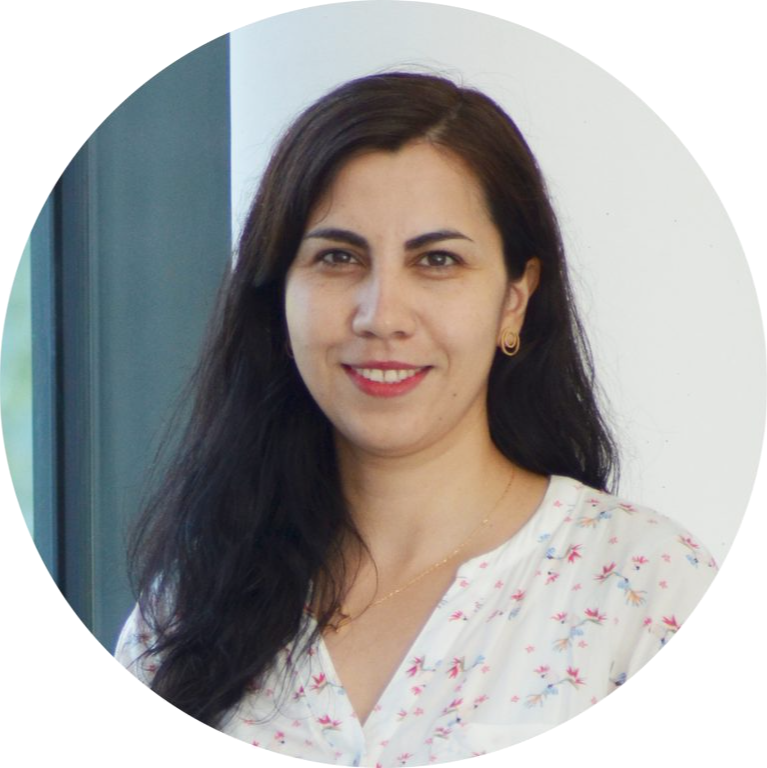Tissue Engineering
Working group Salehi focuses on developing and combining advanced biomaterials with microfabrication techniques. Designing and application of micro and nano features have been evaluated to engineer complex and functional tissue constructs. The modified structures will show improved physical, mechanical and biological properties.
Based on this vision on the in vitro interaction of cells and tissues with engineered materials, its important to design substrates with different topographies and morphologies. Therefore, depending on the target hard or soft tissue properties advanced techniques of fabrication and processing will be used to design appropriate structures to growth and form a functional tissue. The research output should clarify how cells sense and respond to the biomaterials and thereby further modify their environment towards building tissue-like constructs.
Current projects are in the following areas:
• 3-dimensional micro- and nano-structured scaffolds with controlled architecture
• Tissue engineering of soft and hard tissues such as cornea, skeletal muscle, tendon, bone and their interfaces
• Determination of the biomechanics of tissues and their appropriate scaffolds in vitro
• Using external stimulation factors to enhance in vitro tissue formation and evaluation of the engineered constructs
• Engineered tissue for regeneration of the corneal epithelium, endothelium and stroma
Research Projects
Sprenger, Lys (M.Sc.)
lys.sprenger(.at.)uni-bayreuth.de
0921 55-6712
Large-volume muscle loss in muscle tissue cannot be compensated by self-regeneration, here tissue engineering approaches with suitable biomaterials are necessary to restore the functionality of the tissue.
Muscle tissue has a highly unidirectionally oriented and hierarchical structure essential for muscle function. This unique structure should be considered when growing muscle cells in- vitro. In this project, we focus on the development of electrically conductive bioinks for the biofabrication of anisotropic skeletal muscle tissue in 3D printed bioreactors. The project is conducted in close cooperation between the Friedrich-Alexander-University Erlangen-Nuremberg (Institute of Biomaterials) and the Fraunhofer Institute for Manufacturing Engineering and Automation (IPA), Bayreuth branch.
Sprenger, Lys (M.Sc.)
lys.sprenger(.at.)uni-bayreuth.de
0921 55-6712
Project description needs to be updated
Dr. Salehi-Müller, Sahar
sahar.salehi(.at.)uni-bayreuth.de
0921-55 6727
A major challenge in corneal tissue engineering and lamellar corneal transplantation is to develop synthetic scaffolds able to simulate the optical and mechanical properties of the native cornea. We have introduced different substrates such as nanofibrous scaffolds and microfabricated substrates for cornea tissue engineering which as a main requirement are transparent to imitate the native cornea. Moreover, we evaluate the bio- and immunocompatibility and how they support the viability of human corneal cells without triggering effects in granulocytes, and peripheral blood mononuclear cells.
![]()
Fig.: Transparent nanofibrous scaffold made from PGS/PCL blend provide a suitable substrate for endothelium cells with hexagonal morphology. (S. Salehi, et al. Acta Biomaterialia 2017, 50C, 370-380 and Macromol. Mater. Eng. 2014, 299, 455–69.) https://doi.org/10.1016/j.actbio.2017.01.013, DOI: 10.1002/mame.201300187) Copyright© 2017 Elsevier and Wiley & Sons.
Dr. Salehi-Müller, Sahar
sahar.salehi(.at.)uni-bayreuth.de
0921-55 6727
Skeletal muscles have a high capacity of self-repair but are not able to regenerate when a significant loss of tissue occurs, resulting in severe loss of function. Therefore, in our group we focus on combination of biomaterials and microtechnologies to engineer a functional skeletal muscle tissue. From injectable materials to deliver the cells to micro and nanofibrous scaffolds are evaluated to fabricate muscle micro tissues.
In one approach, we developed ultrathin cell carriers as an injectable material using a microfabrication technique to generate aligned skeletal myoblasts, which was the winner idea at Falling Walls Lab Sendai, Japan in 2015 and finalist of Falling Walls Lab Berlin in 2015. In addition, we have used electrically conductive nanofibrous scaffolds and micropatterned wet spun fibers for skeletal muscle tissue engineering. Conductive substrates and aligned topography of fibres showed a synergistic effect on myogenesis and lead to formation of contractile myofibers under the external electrical stimulation.
![]()
Fig.: Flexible cell carriers are suitable substrate for cell alignment and can mechanically support the cells from injection pressure. Myotubes with length around 400 μm was formed on injectable carriers. (S. Salehi, et al. ACS Biomat. Sci. & Eng. 2017, 3 (4), 579–589. DOI: 10.1021/acsbiomaterials.6b00696. Copyright© 2017 American Chemical Society.)
Dr. Salehi-Müller, Sahar
sahar.salehi(.at.)uni-bayreuth.de
0921-55 6727
This project is funded (2019-2021) by DFG Forschungsgemeinschaft (DFG, German Research Foundation) about “New tool for fabrication of microtissues with anisotropic fibrous structure based on touch-spinning and 3D printing” which is in collaboration with Prof. Leonid Ionov from University of Bayreuth.
Dr. Salehi-Müller, Sahar
sahar.salehi(.at.)uni-bayreuth.de
0921-55 6727
This project is funded (2018-2021) by DFG TRR-SFB 225 consortium as subproject B03 “Simultaneous printing and biofabrication of skeletal muscle tissue and bioreactor”. The project is in collaboration with Prof. Boccaccini from university of Erlangen and Prof. Jan Hansmann from University of applied sciences Würzburg-Schweinfurt.
Further information can be found on the TRR-SFB 225 Biofabrication homepage
Publications
Sawan Shetty, Selvakumar Murugesan, Sahar Salehi, Alexandra Pellert, Melanie Scheibel, Thomas Scheibel & Srinivasan Anandhan
Evaluation of piezoelectric behavior and biocompatibility of poly(vinylidene fluoride) ultrafine fibers with incorporated talc nanosheets
Applied Polymer, Vol. 139, Issue 29, Aug. 202
Koeck, K. S., Salehi, S., Humenik, M. & Scheibel, T.
Processing of Continuous Non-Crosslinked Collagen Fibers for Microtissue Formation at the Muscle-Tendon Interface
Advanced functional materials, 2021
Aigner T. B., Haynl C., Salehi S., O'Connor A., Scheibel T.
Nerve guidance conduit design based on self-rolling tubes
Materials Today Bio, 5, 100042
Salehi S., Koeck K., Scheibel T.
Spider silk for tissue engineering applications
Molecules, 25, 737-757
Wicklein V. J., Singer B. B., Scheibel T., Salehi S.
Nanoengineered biomaterials for corneal regeneration
In: Nanoengineered Biomaterials for Regenerative Medicine. Micro- and Nano Technologies, Elsevier: 379-415
Salehi S., Scheibel T.
Biomimetic spider silk fibres: from vision to reality
The Biochemist, 40: 4 – 7
Sadeghian B. R., Ebrahimi M., Salehi S.
Electrical stimulation of microengineered skeletal muscle tissue, effect of stimulus parameters on myotube contractility and maturation.
J. Tissue. Eng. Regen. Med., 12: 912 – 922.
